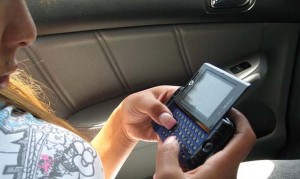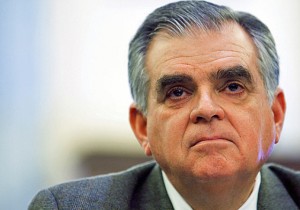With cellphones, texting and other distractions blamed for several thousand traffic fatalities annually, Transportation Secretary Ray LaHood today introduced a new “Blueprint for Ending Distracted Driving” that could effectively limit the fast-expanding world of so-called “connected car technologies.”
The announcement, ironically, came on the same day that leaders of the communications, automobile and digital technologies industries were gathering together in Detroit to discuss the latest in-car technologies and the way to expand infotainment and telematics revenues.
But one study disclosed at the conference raised the question of just how much more technology motorists really want to deal with when driving, suggesting there is surprisingly little support for apps-based systems that could put access to such social media services as Twitter and Facebook on the dashboard.
LaHood’s ambitious “Blueprint” aims to curb traffic fatalities caused by the use of cellphones and other technologies while driving. And though it does not specifically outline an outright ban it encourages more stringent state and local regulations – and provides $2.4 million in grants to assist police in catching distracted drivers.
“I don’t have a bill to hand to Congress,” said LaHood, who has made distracted driving a hallmark of his tenure at the Department of Transportation. But the Secretary indicated he would support a national ban – possibly one that might restrict the use of hands-free devices as well as handheld cellphones.
The plan he outlined is modeled after a pilot program that was crafted by the DoT’s National Highway Traffic Safety Administration and tested in both Syracuse, New York and Hartford, Connecticut. The grant money will be used to expand the pilot to California and Delaware.
The programs’ sponsors claim they measured a 72% drop in texting by drivers in Hartford and a 32% decline in Syracuse.
Texting has become the poster child for those seeking a crackdown on distracted driving. Just yesterday a judge in Haverhill, Massachusetts imposed a 2-1/2 year sentence on Aaron Deveau for vehicular homicide. A jury determined that Deveau, then 17, had crossed the center line while texting, resulting in a crash that killed an oncoming driver and seriously injured his passenger.
“We know we have much more work to do,” said LaHood. “One of every 10 highway fatalities is caused by distracted driving. At this very moment, 660,000 drivers are talking on the phone while behind the wheel on our nation’s roadways.”
NHTSA data indicate 3,092 people were killed as a result of distracted driving in 2010.
Since LaHood began his distracted driving campaign in early 2009, the number of states barring texting while driving has jumped from 18 to 39. Meanwhile, 10 states and the District of Columbia now ban handheld cellphone use, up from seven.
The Blueprint does not appear to be nearly as draconian as the proposals outlined last year by the Transportation Safety Board, the TSB calling for a ban on virtually all use of in-car technologies beyond the basic car radio.
The DoT plan immediately won praise from the non-profit Consumers Union. “Too many drivers are paying more attention to their phones than the road,” said Ellen Bloom, Director of Federal Policy and the CU Washington Office. “Distracted driving has led to thousands of deaths, and hundreds of thousands of injuries. We’ve learned that the number-one way to convince young drivers to stop texting behind the wheel is to educate them on just how deadly the risks are, and that’s a big part of this blueprint by the Transportation Department. It’s a great initiative that will help save lives.”
Even so, LaHood’s proposal is likely to be greeted with caution, at best, by leaders of the communications and automotive world. They’re gathered for an annual Telematics conference in Detroit where one speaker after another is proposing ways to expand the range of services available in the “connected car.”
(Verizon has big plans for the “connected car.” Click Here for the story.)
An optimistic telecomm giant Verizon marked the opening of the conference by announcing its purchase of former General Motors subsidiary Hughes Telematics.
Some of the services being shown are actually intended to enhance vehicle safety – or to assist motorists in the event of a crash. But others would, for example, expand the range of smartphone apps that could be called up on a vehicle’s infotainment system.
Of course, the real question is whether that’s what consumers even want. Demand for less intrusive apps, such as the Pandora audio service, has clearly been strong, with high-tech infotainment systems, such as Ford’s Sync, a big selling point, especially for younger buyers.
Motorists are interested in “specific applications that make sense when they’re driving,” reported Thilo Koslowski, a speaker at Telematics Detroit 2012. But he warned his audience “not to confuse” what consumers like when sitting at a computer or using a device like an iPad with what makes sense to them behind the wheel.
“The car is very different in terms of what it has to provide,” said Koslowski, an analyst with the tech consulting firm Gartner.
And while several makers, including Mercedes-Benz with its updated mbrace2 system, allow motorists to post Facebook or Twitter entries while driving, that doesn’t appear to be particularly appealing to most car buyers, according to a new Gartner study.
On the other hand, about 82% of vehicle owners said they would be willing to pay for connected vehicle services such as Pandora or Internet radio, or for advanced safety services.


